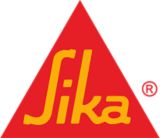2024
Modular Building
How Bonded Interior Wall Panels Can Industrialize Modular Building
Eliminate cracking. Reduce rework. And assemble a finished wall in 4 hours instead of one day. As modular building progresses to the next phase of industrialization, interior wall assembly deserves a fundamental rethinking. Together with Sika, leading manufacturers are revolutionizing their offsite operations to save time, improve repeatability and eliminate finishing work thanks to the latest elastic adhesive assembly systems.
A Wall-First Approach
Old habits die hard. So it’s no coincidence that many modular builders start with a frame-first approach to interior wall construction. Unfortunately, this represents a major barrier to industrialization. Because with every traditionally mounted piece of drywall comes an array of time-consuming tasks including levelling, drilling, screwing, hole filling, sanding and surface finishing. In many cases, the amount of time spent on rework alone vastly outweighs actual assembly time. From the perspective of manufacturing and assembly efficiency, each of these finishing steps represents massive potential for productivity gains. Start instead with a surface- f inished wall board, lay it flat and bond the frame, and an entire wall can be completed in a fraction of the time under far better working conditions.
Better Quality. Better Precision.
An assembly designed for elastic bonding isn’t just more efficient – it’s also ideal for aesthetics. Each panel’s tolerances can be precisely controlled to minimize gaps, and the surface can be perfectly leveled. Compared with mechanically fixed boards, bonded assemblies ensure increased stiffness and more homogeneous stress distribution across the wall surface. This means fewer stress fractures, gaps and fillers, all of which are directly experienced by the building’s occupants.
More Than Just Adhesives
Adhesive bonding is just one part of the industry’s leading integrated technology platform for industrialized modular building. Sikaflex®, SikaForce®, SikaTherm® insulation and SikaBiresin® putty – together with a wide range of waterproofing and 2K tile bonding systems – can all be combined and standardized within semi- and fully automated application environments. In fact, Sika has dedicated decades to supporting manufacturers of commercial vehicles, home appliances and other industrial assemblies in their journeys towards smoother process design and optimization.
Your DfM
A partner Design for Manufacturing and Assembly (DfMA) is all about reducing manufacturing time, complexity and costs. But it demands close collaboration between technical experts from the earliest design phases. Sika’s combined expertise in both traditional construction and industrial assembly helps to guide the way forward. Whether it’s design planning, material development and selection, process optimization, standardization or certification, Sika’s local technical experts and technology centers are by your side every step of the way. Together, we can prove what’s possible when time savings are achieved at scale. From 20 hours saved per wall, to 80 hours per room, to potentially months saved for a single building – we’re paving vital new paths to productivity. Learn how Sika’s chemistry and engineering experts can help you move modular building forward.
How Can We Help Move Your Business Forward?
Sika’s Modular Construction Solutions Include:
- Passive fire systems
- Joint sealing for interior and exterior applications
- Roofing membranes and systems
- Various adhesives for several applications
- Concrete admixtures
- Bathroom pod waterproofing and tiling systems
- Process optimization and production support
- Technical support and onsite services
- In-situ wall insulation
Benefits of Sika Modular Construction Solutions:
- Reduce material handling and waste for more sustainable manufacturing
- Flexible industrial solutions developed for every kind of application
- Expert specification support combining industry know-how and construction products
- Simplify processes to boost output, reduce errors and rework costs
- Reduce labor costs through automation
- High-quality products and services meeting local and international building regulations
- Safe and secure buildings with certified fire protection systems
- Improve structural integrity and reduce weight with adhesives
- Reduce noise and improve comfort with acoustic solutions

